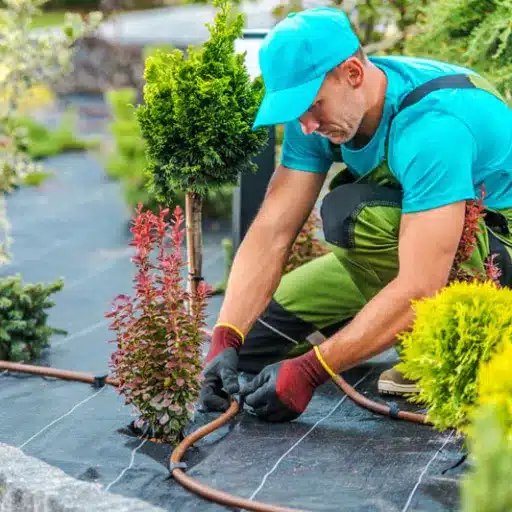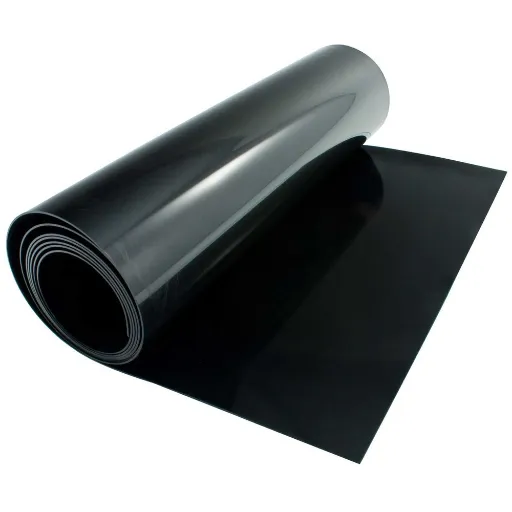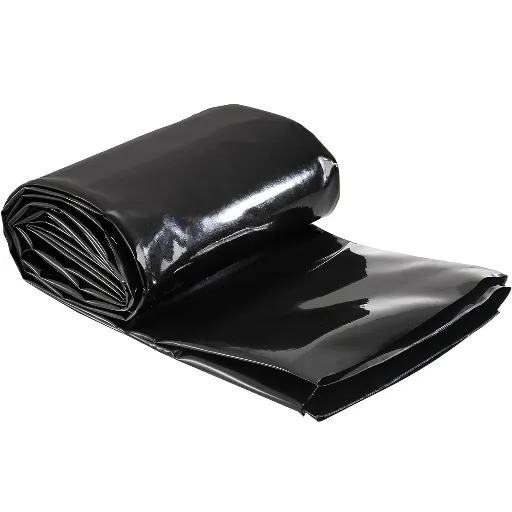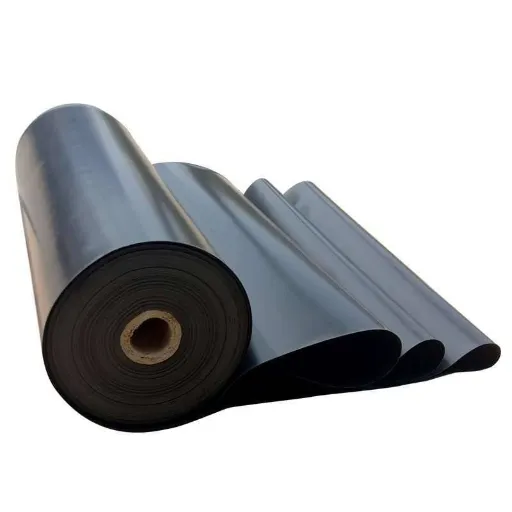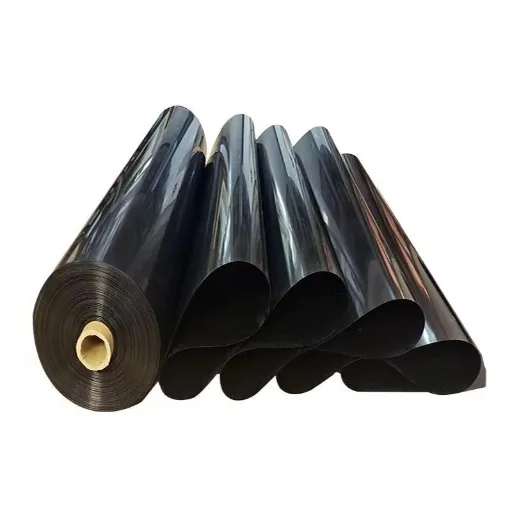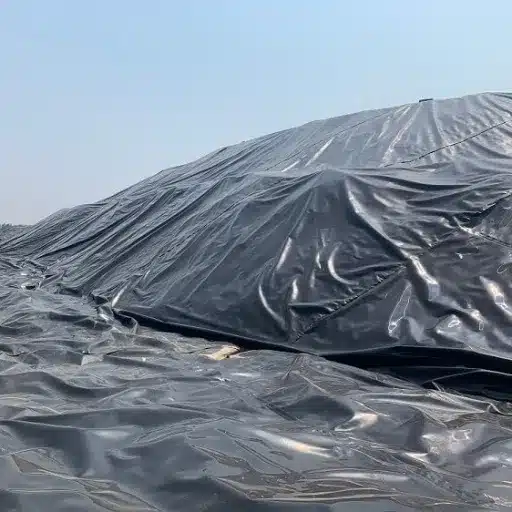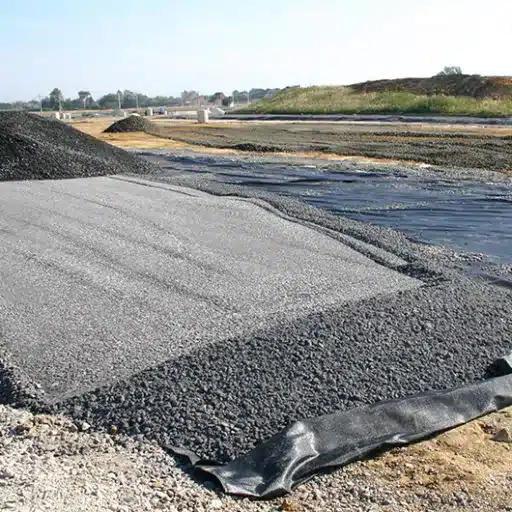When it comes to crafting a low-maintenance gravel landscape free from weeds, choosing the right fabric can be the game changer. Indeed, not all fabrics are the same, and picking the right one tremendously saves you times of maintenance while enhancing the look and function of your outdoor space. This article encompasses everything you would want to know about the landscape fabric for under gravel, from its benefits to the necessary qualities to look for, together with suggested products backed by expert opinions. In creating your garden path, driveway, or decorative rock bed, we will assist you in selecting the most effective option for your project.
Introduction to Landscape Fabrics
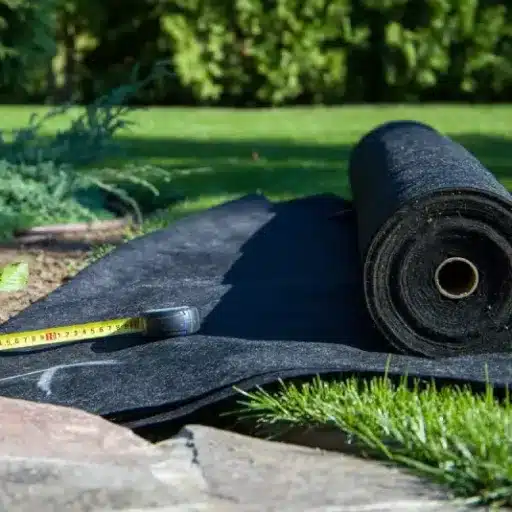
Landscape fabrics are important for use under gravel as they suppress weed growth, aid drainage, and narrow down the longevity of your project. Acting as the barrier between soil and gravel, these fabrics lessen maintenance and enhance stability over time. In choosing the fabric, remember what the projects need, such as durability, permeability, or resistance to wear.
What is Landscape Fabric?
Landscape fabric, or geotextile fabric, refers to any durable material used to prevent weed growth, stabilize soil, and aid in drainage in various outdoor projects. Typically manufactured from woven or non-woven polypropylene or polyester, it stands as a barrier between soil and an upper layer of material such as gravel, mulch, or decorative rocks. Such a barrier allows the passage of water and air yet prevents weed growth so that your outdoor space remains clean and easy to maintain.
Key Statistics:
- 90% reduction in weed growth with properly installed landscape fabric
- Up to 20 years lifespan for UV-resistant fabrics
- Professional-grade geotextiles widely used in the USA for driveways, drainage, and pathways
Weight (ounces per square yard) of landscape fabric, type of material, permeability-Criteria for selection of landscape fabrics-so that it meets the needs of end-use applications. For example, heavier fabrics are better suited to high traffic applications such as driveways, whereas lighter ones do well in garden beds. At any rate, landscape fabric is an immense help in maintaining the aesthetic and functional integrity of outdoor spaces.
The Importance of Weed Control in Rock Gardens
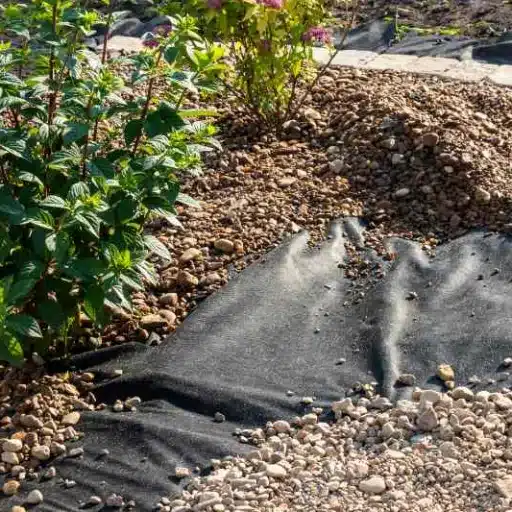
In weed control lies the essence of maintaining rock gardens’ beauty and usefulness. Any aggressive weed can disrupt a harmony that has been created among graced rocks and faint plants while competing for nutrients, water, and sunlight. If weeds are left unmanaged, the garden will soon abandon its incarnation and drown in their unwanted plants.
Expert Benefits
- 90% inhibition of weed growth
- Forms effective sunlight barrier
- Breathable design for plant health
Maintenance Results
- 60% reduction in weeding time
- Enhanced garden appearance
- Combined effectiveness with mulching
Maintenance, on the other hand, is very important. Studies have demonstrated that persistent weeding reduces the amount of time spent on removal by 60% during a six-month period. Mulching would be equally effective as well. Putting down a layer of mulch such as gravel or bark over the landscape fabric further suppresses weeds while enhancing the look of the rock garden.
Benefits Offered by the Use of Landscape Fabric
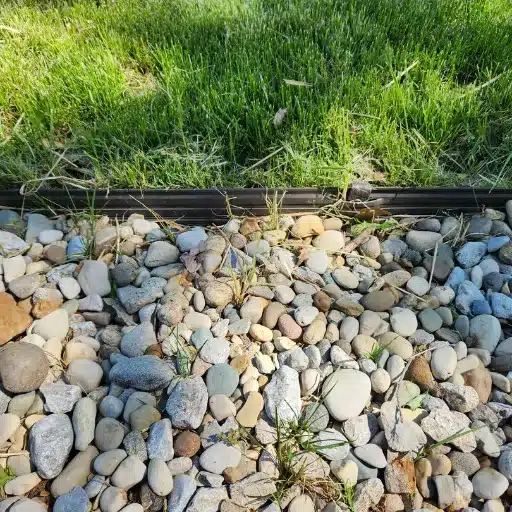
There are multiple advantages of using landscape fabric. It is good in suppressing weeds, minimizing maintenance, and retaining soil moisture. Moreover, it helps air and water to pass through the soil and thus nutrients to be absorbed by plants. With mulch applied over landscape fabric, the look of the garden can be enhanced.
Effectiveness Against Weeds
The effectiveness of landscape fabric as a weed barrier is well accepted if combined with other preventive measures such as mulching or gravel. When installed properly, high-quality landscape fabrics can present a barrier against the growth of almost 95% of weeds. It is a physical barrier preventing sunlight from reaching to soil that is very much needed for weeds to germinate and grow.
Performance Statistics
| Weed Suppression: | Up to 95% |
| Weeding Reduction: | 30-50% less needed |
| Optimal Mulch Layer: | 2-3 inches on top |
Most landscape fabrics are porous; thus, water is able to drain while air circulation becomes possible, thus maintaining a healthy state for the soil below it. Recent studies have shown that putting 2 to 3 inches of mulch or gravel on top of the fabric produced the greatest weed suppression effects by minimizing the capacity for surface-level seeds to germinate. According to data, 30 to 50 percent less weeding is needed for gardens that used landscape fabric and mulch in comparison to gardens without these measures.
Maintaining landscape fabric on a regular basis will retain the effectiveness of the weed barrier just as established in the preceding paragraph. As time passes, some organic debris and fine soil particles may be deposited on top of the fabric, providing a growing medium for weeds. In order to keep the long-lasting effect of the barrier, this debris should be cleaned, and mulch should be replenished from time to time. Hence, with modern materials and regular maintenance, landscape fabric becomes a dependable way for weeds to stay at bay, consequently cutting down the hours gardeners have to spend weeding.
Retention of Soil Moisture
One of the more significant advantages of landscape fabric is that it helps retain soil moisture, which is a great benefit to plant growth. By acting as a barrier, the landscape fabric obstructs the evaporation of water out of the soil and thus helps in keeping the water level in the soil intact so that plants have access to moisture. This becomes especially beneficial during drought or dry seasons when conserving as much water as possible is a necessity. Studies have shown that landscape fabric can reduce soil moisture loss by up to 30%, thereby serving as a useful tool for making gardens and landscaping more water-efficient.
Another thing is that since it works against runoff by permitting rain and irrigation water to penetrate into the soil effectively, it just mitigates surface erosion, ensuring a direct hit for water on plant roots. Best application of landscape fabric is achieved when combined with organic mulch, a synergy that further enhances moisture retention by insulation, which protects the soil from direct sunlight. This then indirectly leads to better plant health, lower watering needs, and saving of time and resources for gardeners.
Key Features When Selecting Landscape Fabric
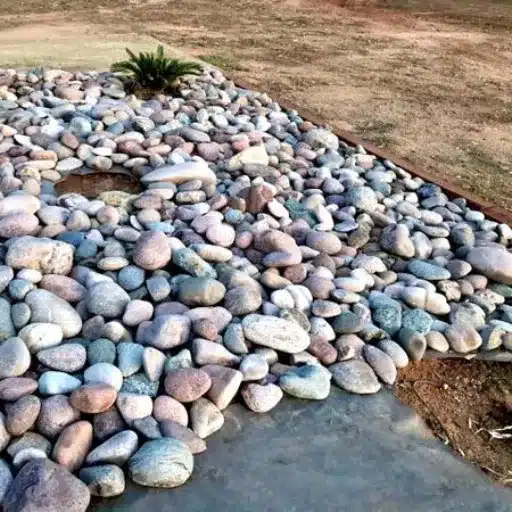
Durability, permeability, and UV resistance are my main considerations when selecting landscape fabrics. A good-quality fabric should prohibit weeds from growing while simultaneously allowing water and nutrients to pass into the soil. Installation is often quite easy, and I usually look for options based upon whether they work with the plants or materials in the actual garden setup.
Material Durability and Thickness
Depending on the nature of the case, the durability of landscape fabric and the thickness of the material must be considered for optimal performance. High-quality fabrics are usually made of polypropylene or polyester, both of which resist UV rays, mold, and wear over time. Thicker cloths usually range somewhere between 5 and 8 ounces per square yard and are much more durable in the long term and able to deal with heavier-duty applications, such as suppressing weeds in areas subjected to substantial foot traffic or under gravel and pavers.
| Fabric Weight | Best Application | Weed Suppression |
|---|---|---|
| Light (Under 3 oz/sq yd) | Gardens with little weed pressure | Basic protection |
| Medium (3-5 oz/sq yd) | Middle ground applications | Good balance |
| Heavy (5-8 oz/sq yd) | High traffic areas, under gravel | Up to 99% |
More generally, recent research has found a great correlation between thick fabrics and weed prevention, some of the more expensive ones reaching weed suppression of 99 percent with proper installation. Also, non-woven fabrics have been shown to retain water better, allowing moisture to slowly and evenly permeate plant roots.
Industry research data suggests that light fabrics, usually below 3 ounces per square yard, would best be suited for gardens with little weed pressure, whereas a medium weight, which would be around 3 to 5 ounces, reflects a middle ground between price and effectiveness. Before purchasing, one must analyze the needs of one’s garden with respect to climate and soil types and the species grown to ensure the selection of a fabric with an appropriate thickness and material for excellent performance.
Water and Air Permeability
Good landscape fabric lets water and air through yet bars weeds. Water should percolate evenly to the soil through a landscape fabric to ensure even moisture distribution to roots, promoting root growth without waterlogging. Air permeability is equally important because oxygen exchange in the soil feeds microorganisms and general plant life.
Modern Fabric Specifications
- Water Permeability: 0.05 – 0.2 cm/s
- Air Permeability: 1.5 – 5 liters per sq meter per second
- Materials: Non-woven polypropylene or polyester
Some of the latest research indicates that modern landscape fabrics made from non-woven polypropylene or polyester materials tend to have water permeability ranging between 0.05 and 0.2 cm/s and air permeability in the range of 1.5 to 5 liters per square meter per second. These two are, indeed, materials that balance durability and functionality, offering just enough moisture and airflow needed to support the health of plants across a vast array of climates.
Effectiveness diminishes as soil particles and debris start to block mechanisms through which these fabrics do their magic. Prolonged care through cleaning off excessive build-up of organic matter on the surface only prolongs their usefulness. For gardens that absorb more water, fabrics might be considered that have a higher rate of permeability or are micro-perforated.
Top Landscape Fabric Reviews for 2025
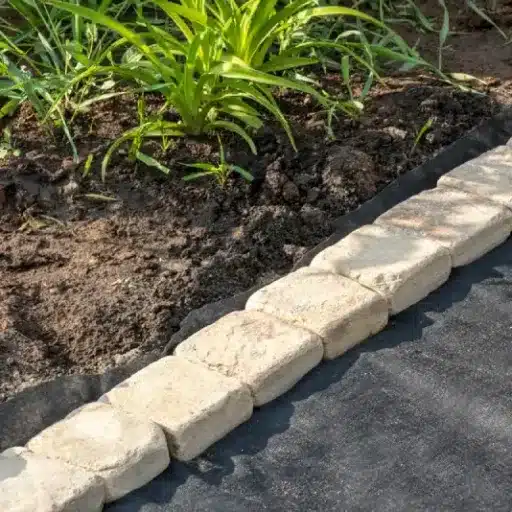
In gardens with increased levels of retention, I would suggest selecting landscape fabrics that possess higher permeability rates or having them micro-perforated genetically. Also, regular maintenance should be done to keep the fabrics efficient throughout concerning clogging with soil or debris.
Heavy Duty Landscape Fabrics
Heavy-duty landscape fabrics are meant for heavy gardening and landscaping work. These are manufactured with thick material composing greatly of polypropylene or polyester and hence have the highest strength and durability. They are used in places where there is high foot traffic, bigger garden beds, or where weed control and soil stabilization must be carried to the highest level.
Features and Benefits
Tensile Strength
In heavy-duty use, landscape fabrics are put through atmospheric conditions. With a tensile strength rating often greater than 100 psi or pounds per square inch, fabrics can resist tearing and piercing attacks, which is sometimes required when gravel is being put on paths or underneath heavy mulch layers.
Weed Control
Blocked sunlight by 99+% with a tight weave or double layer to argue against difficult kinds of separate weeds while ensuring good air circulation and water infiltration.
UV Stabilized
Most heavy-duty fabrics have UV resistant additives in them to increase their lifespan. These additives do not permit the fabric to degrade quickly when exposed to the sun for a long time, with the fabric capable of lasting for 20 years or more if installed correctly.
Water Permeability
The best fabrics should still have water-permeable layers with a water flow rate running from 3 to 5 gallons per minutes per square foot, watering the plant adequately without drowning them.
Pro Garden Weed Barriers
Pro Garden Weed Barriers will act as a fine weed-management solution in the whole range of landscaping and gardening operations. From the home garden to industrial applications, these barriers are made from materials that blend durability with permeability and eco-efficiency.
Key Features and Benefits:
Highest-Good Material
Pro Garden Weed Barriers are usually manufactured from woven fabrics made from polypropylene or non-woven geotextiles, designed to obstruct tearing, UV degradation, and puncturing. It guarantees a long life even under extreme circumstances.
Best Permeability
In contrast to plastic sheeting, keys Garden Weed Barriers offer unobstructed air and water passage, maintaining soil beneath in a healthy and hydrated state. This function helps maintain the soil fertility of garden plants and dormant.
Superior Weed Control
The barrier blocks sunlight through a dense weave or layers, preventing the germination and growth of weeds. In fact, some studies have shown that effective weed barriers could minimize actual weed growth by 90%, thus saving loads of time and energy that could have been spent on weed control.
Customization and Versatility
Pro Garden Weed Barriers come in a variety of thicknesses and roll sizes (e.g., 3 ft x 100 ft or 6 ft x 250 ft), lending themselves well to name changes for fitting gardens, walkways, driveways, and large-scale agricultural use. This allows laying operations to be undertaken with ease for projects of any scale.
Installation Tips for Landscape Fabric
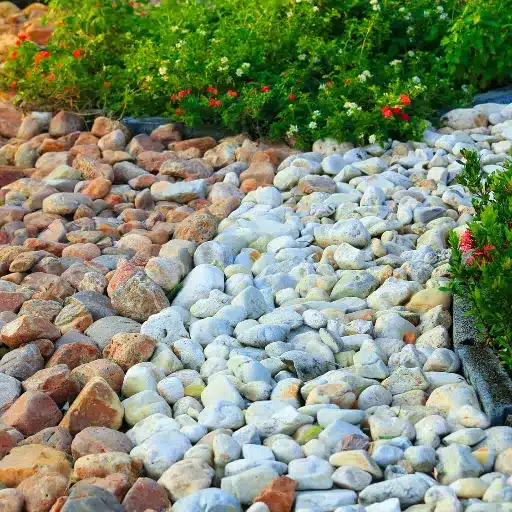
The area is cleared of debris and weeds, then the fabric is laid flat, and adequately secured to the ground with landscape staples. Slits are cut to accommodate plants, and an overlap between sheets is maintained to prevent gaps.
Preparing the Site for Installation
The preparation of the site counts immensely toward the good functionality and longevity of landscape fabrics when applied for gravel. Below are detailed procedures and considerations derived from practices aligning with industry standards and recommendations of experts:
Step-by-Step Installation Guide
1Clear the Area Thoroughly
Begin by removing all existing vegetation, such as weeds, grasses, and roots, as these might all regrow under the fabric. Use a sharp hoe or weed trimmer for shallow-rooted plants, whereas deeper-rooted vegetation will usually require extraction manually with a spade. Some studies have indicated that the removal of at least 2 inches of the topsoil, where most weed seeds are present, may reduce weed growth by approximately 70%.
2Level the Ground
Give final leveling and compaction to the soil with the use of a rake or leveler. Uneven and loose ground offers greater threats of fabric tear and lessens the effectiveness of gravel stabilization. Larger areas can also be compacted with the use of mechanical plate compactor for added uniformity. As shown by studies, compacted soil reduces the possibility of erosion by approximately 50% when combined with a good weed barrier.
3Consider Drainage Issues
Poor drainage will produce pooling of water, impairing the fabric and encouraging weed growth. Where possible, create at least 1 to 2 % grade for surface runoff or install a French drain system to areas most prone to water pooling. Proper drainage will increase the life expectancy of landscape fabrics by 30-40%, as suggested by landscape engineering guidelines.
4Apply Pre-emergent Herbicide (Optional)
For areas with a history of aggressive weed infestation, applying a pre-emergent herbicide can give extra protection. Pre-emergent herbicides with chemicals, such as prodiamine, have been reported to suppress weed germination for up to 6 months. Always follow the manufacturers’ recommendations regarding safe application procedures.
Reference Sources
-
This Old House:
- Article: The 5 Best Landscape Fabrics (2025)
- This source offers a detailed review of top-rated landscape fabrics, including their features, benefits, and suitability for rock gardens. It also provides insights into material types, durability, and installation tips.
-
Northwest Landscape Supply:
- Article: Experts’ Tips to Select the Perfect Landscape Fabric
- This guide explains the different types of landscape fabrics and their applications, including rock gardens. It also covers factors like climate, soil type, and proper installation techniques.
-
Bob Vila:
- Article: The 6 Best Landscape Fabrics, Tested and Reviewed
- Bob Vila’s article provides a comprehensive comparison of landscape fabrics, highlighting their effectiveness for weed control, soil stabilization, and use under gravel or rocks. It includes expert advice and product recommendations.
Frequently Asked Questions (FAQs)
How can the installation of landscape fabric be of help in a landscaping project?
Applying landscape fabric helps prevent weed growth by obstructing the sunlight. This barrier works especially well for landscaping projects that consist of rocks or gravel and need to keep the ground cover neat and clean. A properly installed landscape fabric means that the fabric will stay in place and do its job for years to come.
Can I lay woven landscape fabric under gravel?
Yes, woven landscape fabric should really be set under gravel. The fabric will stop weeds from growing through but will let water drain through. It also keeps the gravel in its place and prevents it from sinking into the soil with time.
What kinds of fabrics are best to be used in rock gardens?
A very thick landscape fabric is best to be used in rock gardens because it has to withstand the impact of the rocks and gravel. The fabrics are designed to be extremely durable and highly effective in the control of weeds so that your landscape can be kept looking perfect without constant weeding.
How do landscape staples work in keeping landscape fabric down?
Landscape staples hold the landscape fabric in place by fastening it to the soil so that it does not get displaced during heavy rains or high winds. Using landscape staples around the edges of the landscape fabric is important so as to keep it from moving about and rendering the weed barrier ineffective.
Is garden fabric suitable for use in vegetable gardening?
Yes, garden fabric can be used for vegetable gardening if it allows the passage of water and nutrients to the soil. The use of a landscape fabric weed barrier in vegetable gardens can ward off the growth of weeds while maintaining a neat and manageable area for the gardener.
How does landscape fabric prevent weed growth in an area having existing plants?
Landscape fabric works by letting water and air through to the existing plants while blocking the fires-from growing weeds. When you lay down landscape fabric around the edges of the existing plants, you ensure that the plants receive their required resources with no weed competition.
Ready to Transform Your Landscape?
Choose the right landscape fabric for your project and enjoy a low-maintenance, weed-free outdoor space for years to come. Remember to consider your specific needs, soil conditions, and climate when making your selection.

